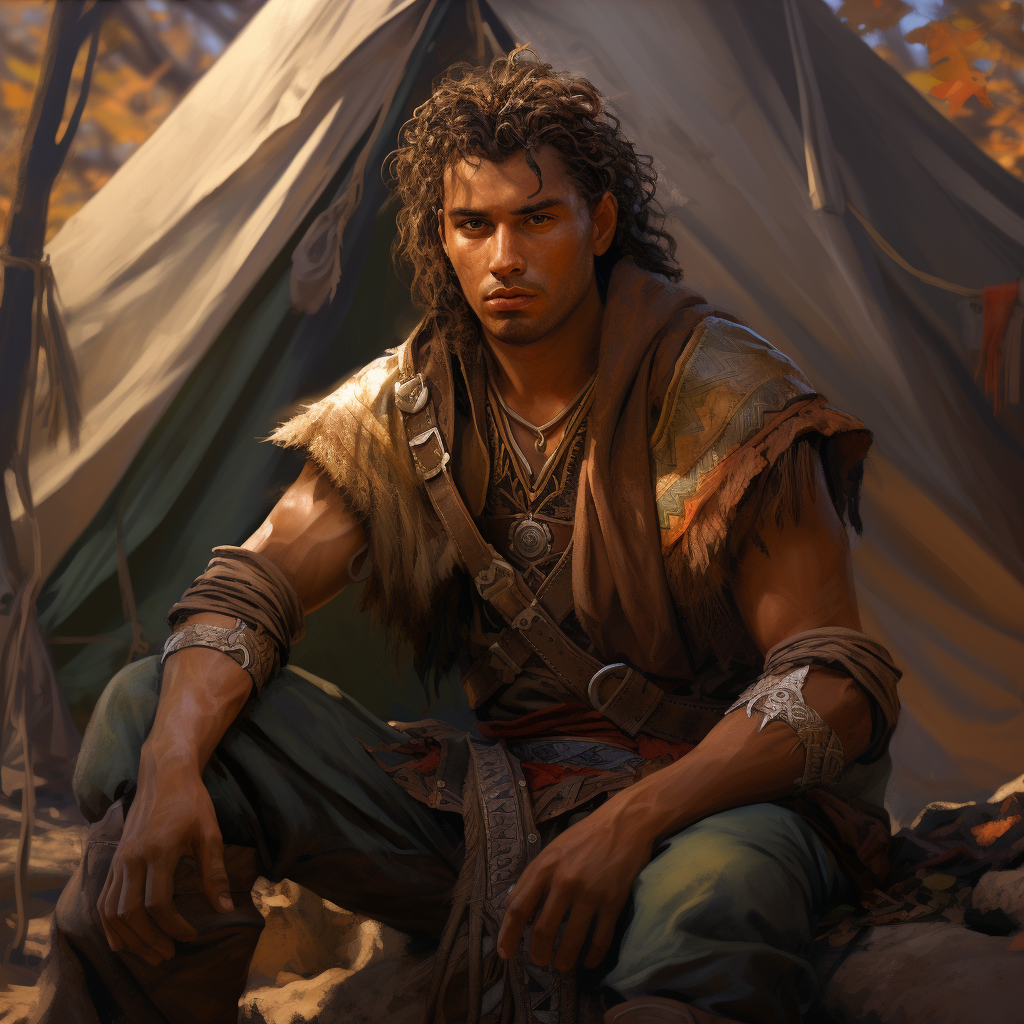Adventurers' Tents
On Earth, most modern camping tents are generally optimized to be light weight and easy to set up, often at the expense of size and comfort. Most ancient medieval era Earth tents were optimized to be large and comfortable, often at the expense of weight and ease of setup. Without factories churning out interchangeable parts, Interlocking tent poles would have to be made by hand which would require a very skilled carpenter or blacksmith. Time consuming, but hardly impossible when you consider the amazing feats of engineering ancient people achieved. Likewise a skilled medieval craftsmen could make a tent out of sturdy light weight materials. Even ancient people had cloth that could keep the rain out. Medieval people could have made tents fairly similar to modern tents, they just chose not to. Almost all things are hand made and making a lightweight sturdy tent made with carefully fitted neatly interlocking tent poles takes a lot of labor to make, therefore such a tent would be fairly expensive. Several times the cost of a normal tent. Like in medieval Earth, normal Scarterran travelers will try to plan a journey to leapfrog from inn to inn. If need be, they will knock on a farmer's door and ask for permission to sleep on his floor or in his barn. If stuck without shelter, most travelers will sleep in or under their cart or bundle up in layers of clothes on the ground under a tree. Most typical travelers with tents are nomads by nature. Soldiers on the march, roving hunter-gatherers, or traveling performers or circuit priests. Their tents are large and bulky, more analogous to modern mobile homes than to modern camping tents. Most Scarterrans who might need or want a light weight and very fast to set up tent can't afford one. But Scarterra has lots of something medieval Europe didn't have much of, freelance adventurers. These sorts have a greater need for them and (sometimes) have the ability to afford them. Because an adventurers tent costs as much as a horse of breeding, a lot of adventurers will try to make due without them."If you see a very well-crafted tent in the middle of a field or forest away from the road. Either forget you saw it or tell the local soldiery. Whoever is in it is up to no good. -Havro the peasant farmer
Mechanics & Inner Workings
Water resistant cloth is not especially difficult or expensive to make. Most tents have this. It's not unique to adventuring tents.
What sets adventuring tents apart from garden variety tents is the carefully interlocking poles designed to make tents lightweight and easy to set up.
History
For those who have dabbled in modern low impact camping, it's feels like you are connecting with olden times.
A modern camping tent doesn't feel that modern. Ancient and medieval people had tents, but they were more analogous to modern RVs and modern camper trailers than they are analogous to modern tents.
A modern tent is designed to be as light as possible, and as easy to set up as possible.
Casual hobbyist campers don't want to carry around heavy things and they don't want to spend a lot of time setting up the camp. They want to do the fun stuff on their camping trip as quickly as possible.
A non-casual hobbyist that climbs high mountains and camps in intense places still wants a light tent (because they are carrying it themselves long distances). They want a tent that is fast and easy to set up (because they could die to the elements if they dillydally).
Most ancient and medieval tents were intended to be as close to providing the comforts of homes as possible. A military tent city or a merchant's tent city, or the tents carried by a group of traveling performers all go by the same principle. This is a group of people's temporary home. It's more important that the tents be large and comfortable than it is for the tents to be light weight and easy to set up.
Looking at real nomadic people in Earth history, or even modern day like Mongols with their yurts. These are not temporary shelters but mobile homes. Nomadic people don't normally pack and move their full encampments every day. They will set up base camp somewhere and send out foraging parties until they can't glean more from the area. Then they pack up their tents and move. Usually staying weeks or months in a place at the same time.
Scarterran nomads are generally very similar. This applies to armies on the march or Mereshnari riders marching through the desert or Nami aligned traveling troupes of performers.
Significance
Reagent foragers have to venture into the deep wilderness to find reagents or they have to poach reagents from other people's land. Either way they cannot stay in inns regularly.
Reagent foragers are but one type of freelance adventurer, but they are the most common type, so they tend to set the baseline market for tent makers try to make and this trickles down to other types of adventurers.
Item type
Survival
Raw materials & Components
Pretty much all medieval/Scarterran tents are made up of wooden poles and durable cloth, held together with rope and string. What sets an adventurer's tent apart from specially fitted poles and connectors that make set up easier and make tents more resistant to wind and basic natural forces.
It's not technologically difficult to make fitted poles and connectors, but it does take a lot of finesse and care, so it take a very skilled and patient craftsmen to make them. That's why adventurer's tents are so expensive.




Comments